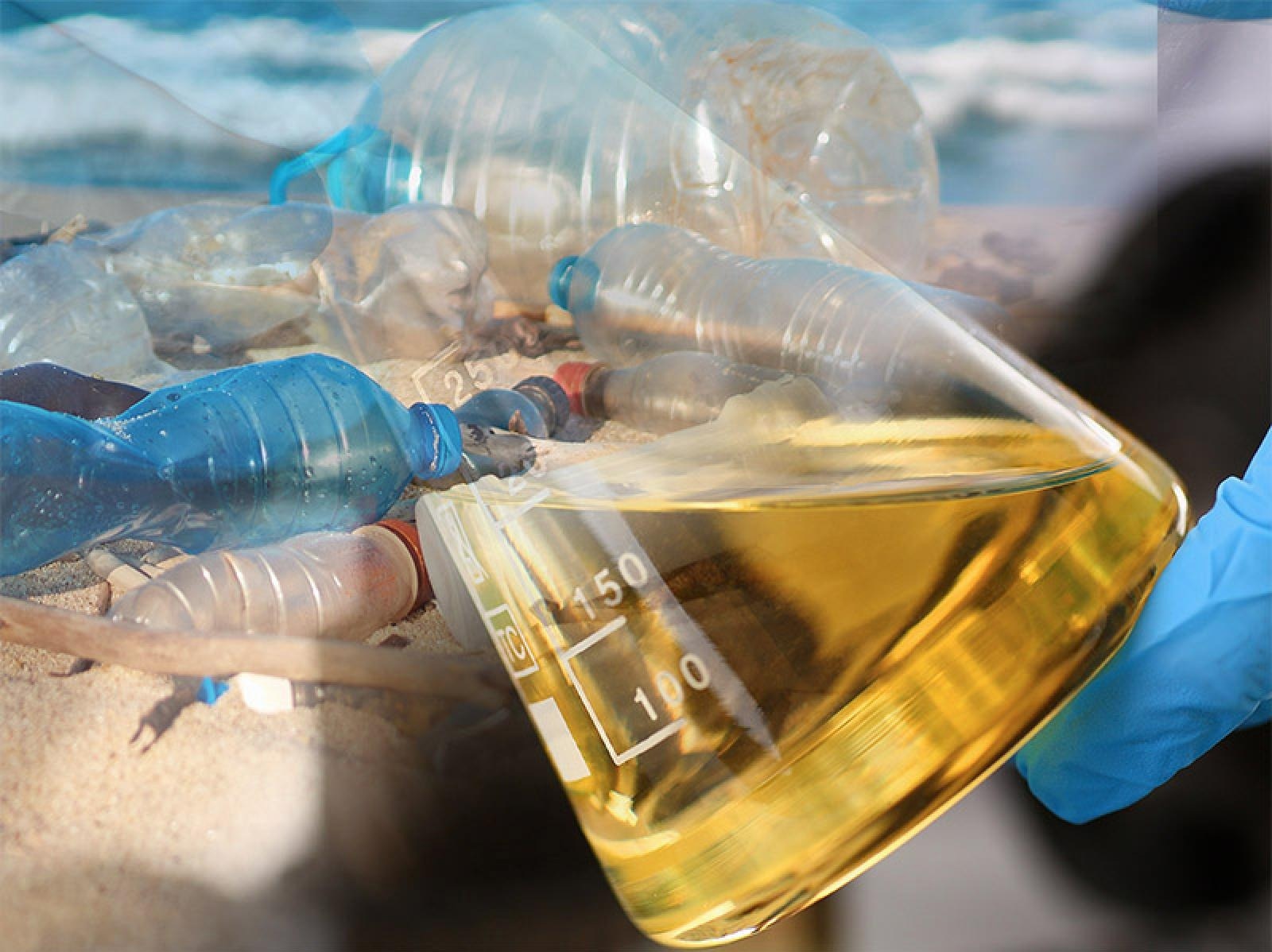Boosting conversion to useable products while using less of the valuable metal ruthenium is the purpose of a plastics recycling innovation presented at the American Chemical Society’s fall meeting in Chicago on August 22nd, 2022.
 Plastic waste may one day be upcycled to useful commodity chemicals instead of ending up in the environment. Image Credit: Cortland Johnson | Pacific Northwest National Laboratory
Plastic waste may one day be upcycled to useful commodity chemicals instead of ending up in the environment. Image Credit: Cortland Johnson | Pacific Northwest National Laboratory
The key discovery we report is the very low metal load. This makes the catalyst much cheaper.
Janos Szanyi, Research Team Lead and Chemist, Pacific Northwest National Laboratory
The new technique, known as “upcycling,” more effectively transforms plastics into valuable commodity chemicals. Additionally, compared to previously documented methods, it creates a lot less methane, a harmful greenhouse gas, as a byproduct.
It was very interesting to us that there had been nothing previously published showing this result. This research shows the opportunity to develop effective, selective, and versatile catalysts for plastic upcycling.
Linxiao Chen, Postdoctoral Research Scientist, Pacific Northwest National Laboratory
Chen presented the research at the American Chemical Society’s fall meeting.
Less Metal is More in Plastic Upcycling
Plastic waste made of petroleum offers an undiscovered source of carbon-based compounds that can be used as a building block for durable goods and fuels. Currently, very little plastic is recycled, mostly for financial and practical reasons.
However, PNNL researchers are attempting to alter the situation by utilizing their knowledge of effectively dissolving chemical bonds.
It is well recognized that converting plastic waste into tiny, value-added hydrocarbons by adding hydrogen—a process known as hydrogenolysis—to polymers that are challenging to recycle, such as polypropylene and polyethylene, is a promising method. For this process to be commercially viable, it needs efficient and selective catalysts.
This most recent study, led by PNNL, excelled in that area.
The research team found that lowering the amount of the expensive metal ruthenium actually increased the selectivity and efficiency of polymer upcycling.
In a study that was recently published in ACS Catalysis, it was demonstrated that the increase in efficiency occurred when the structure changed from an orderly array of particles to disordered rafts of atoms as a result of the low metal to support structure ratio.
Trapped Atoms
The team was able to comprehend why less is more due to PNNL’s track record of success with single-atom catalysts. In this experimental investigation, the research team witnessed the chemical transition from order to disorder and established using a proven theory that single atoms are actually more efficient catalysts.
The study expands on earlier work by Yong Wang, a professor of chemical engineering at Washington State University in Pullman and a fellow at PNNL Laboratory, on atom trapping and single-atom catalysts.
There has been a lot of effort from a material perspective to try to understand how single atoms or very small clusters can make effective catalysts.
Oliver Gutiérrez, Chemist, Institute for Integrated Catalysis, Pacific Northwest National Laboratory
Chen also presented recent research at ACS that focuses on how the system’s support material can be used to increase system effectiveness.
“We have investigated cheaper and more easily available support materials to replace cerium oxide. We found that a chemically modified titanium oxide may enable a more effective and selective pathway for polypropylene upcycling,” Chen added.
Learning How to Tolerate Chlorine
The research team is currently looking into how the presence of chlorine impacts the effectiveness of the chemical conversion to make the approach feasible for usage with mixed plastic recycling streams.
Gutiérrez stated, “We are looking into more demanding extraction conditions. When you don't have a clean plastic source, in an industrial upcycling process, you have chlorine from polyvinylchloride and other sources. Chlorine can contaminate the plastic upcycling reaction. We want to understand what effect chlorine has on our system.”
This comprehensive knowledge could contribute to converting plastic waste into usable items instead of contributing to environmental pollution.
The Office of Science at the Department of Energy provided funding for the study. The Advanced Photon Source, a user facility for the Office of Science run by Argonne National Laboratory for DOE, provided resources for this study.
Journal Reference:
Chen, L, et al. (2022) Disordered, Sub-Nanometer Ru Structures on CeO2 are Highly Efficient and Selective Catalysts in Polymer Upcycling by Hydrogenolysis. ACS Catalysis. doi:10.1021/acscatal.2c00684